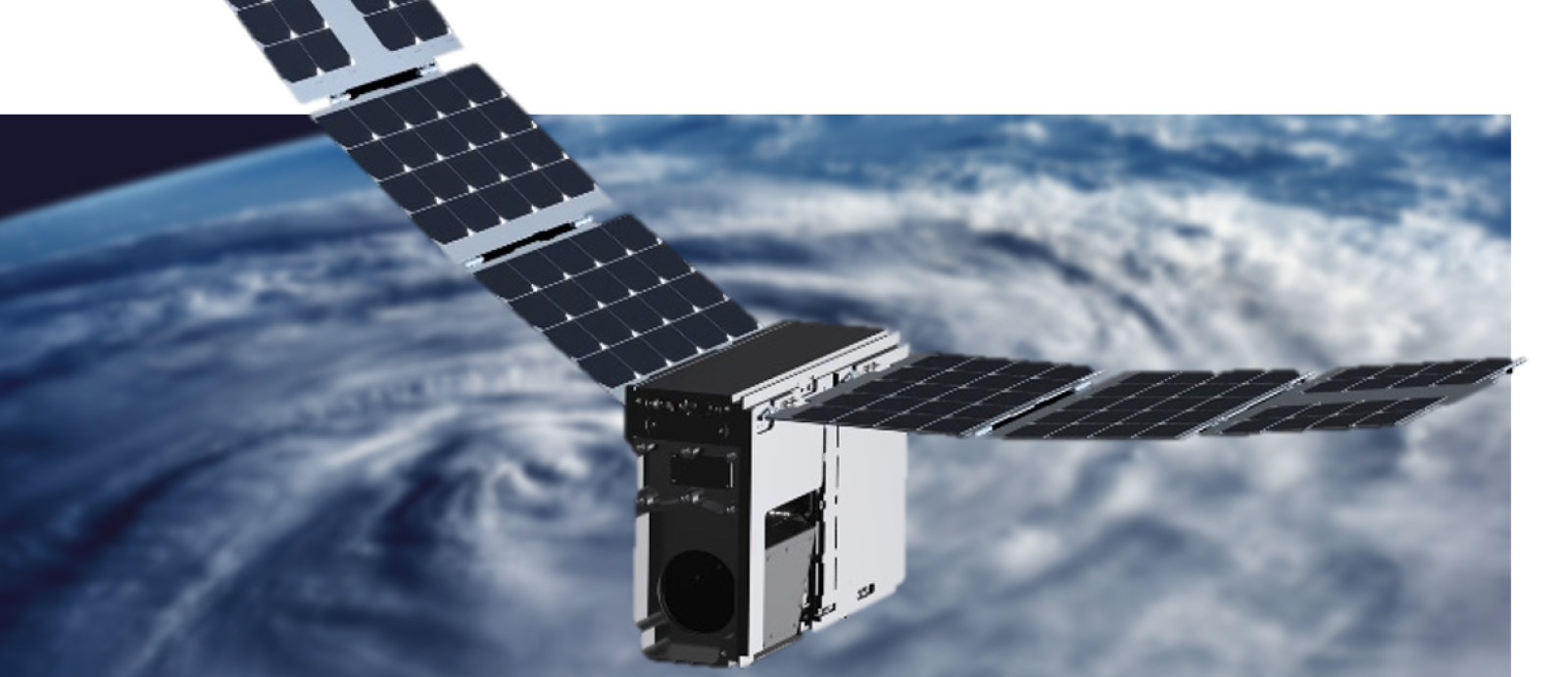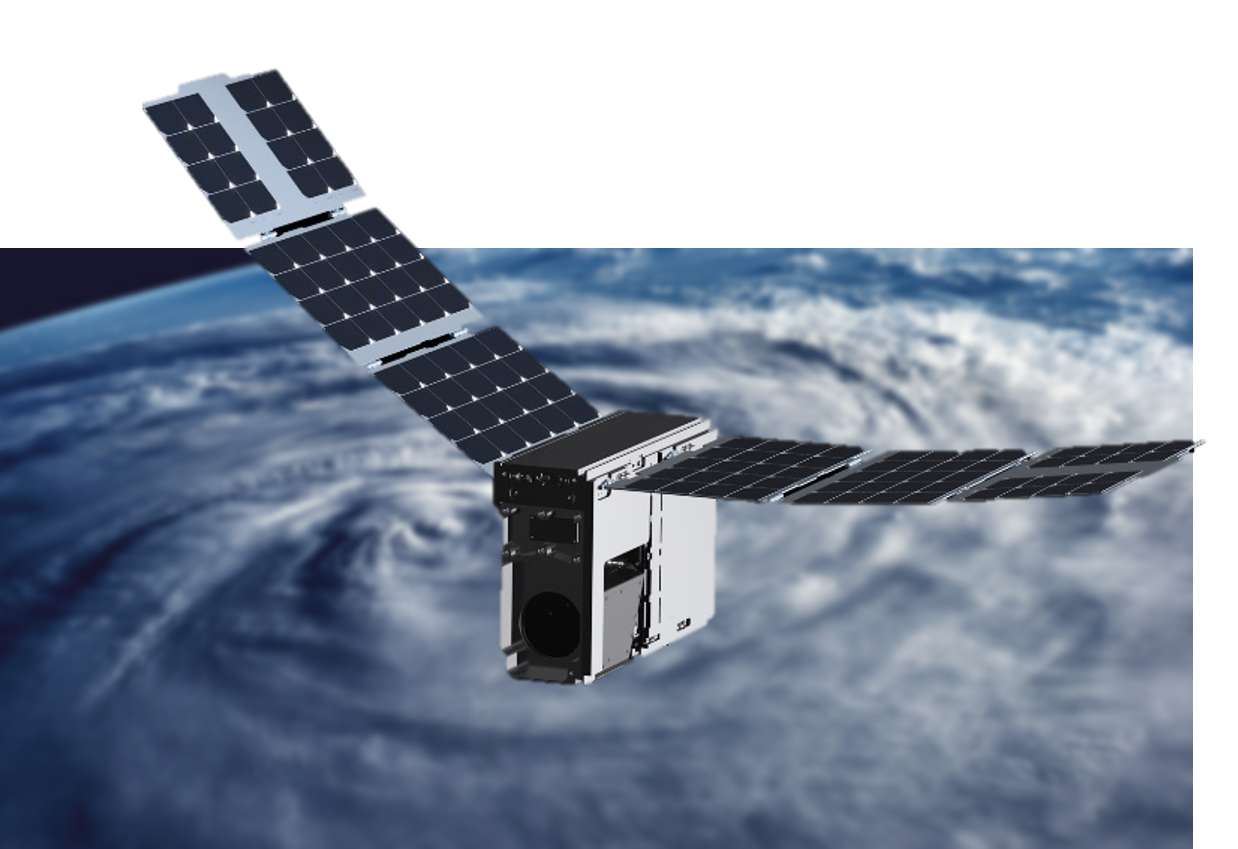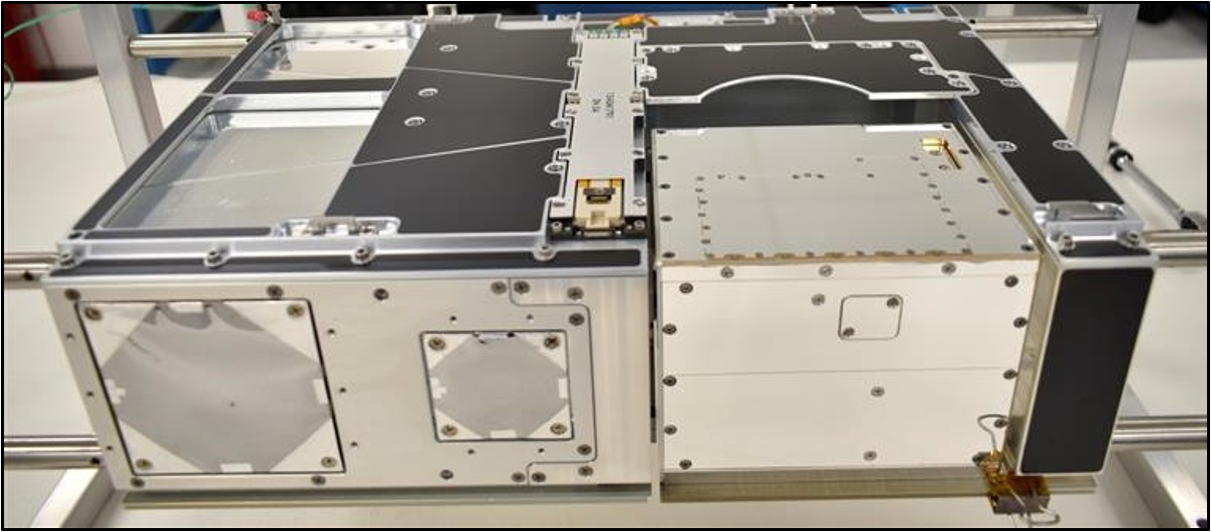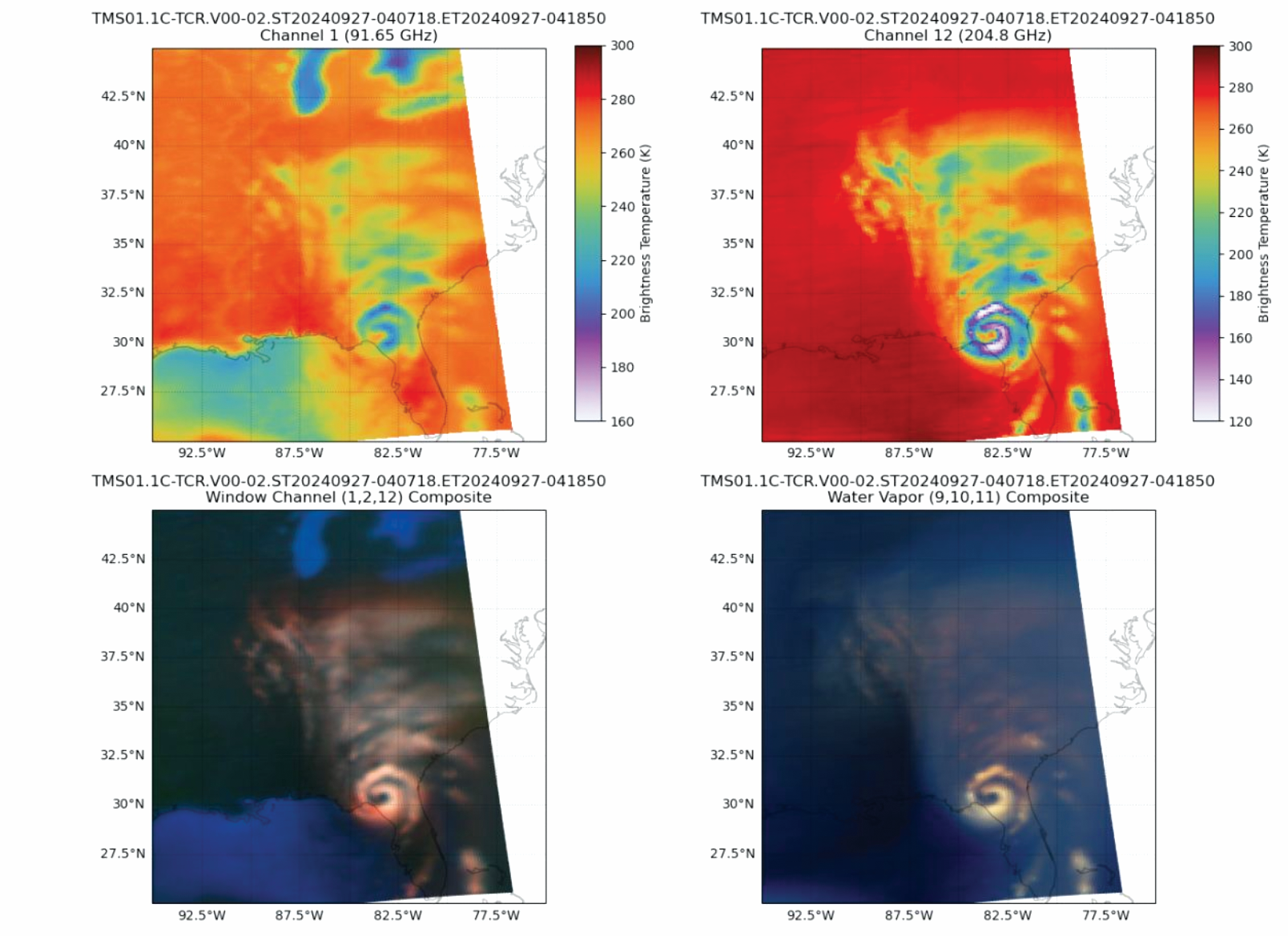
Miniature microwave sounders transferred to industry expand storm-forecasting capabilities
Tropical storms spawn over warm seas and cause widespread damage when they make landfall. Early prediction and ongoing monitoring of a storm’s path and intensity can help people take critical precautions ─ such as securing buildings, checking backup generators, shielding crops, altering transportation schedules, and stocking essentials ─ or ultimately evacuate. Technology pioneered by MIT Lincoln Laboratory for a NASA science mission and transitioned to commercial use is enhancing the delivery of timely information on evolving hurricanes and tropical cyclones.
A 2023 demonstration for this science mission, called TROPICS (for Time-Resolved Observations of Precipitation structure and storm Intensity with a Constellation of Smallsats), confirmed the use of a constellation of CubeSats ─ each a roughly 10 × 10 × 30 cm satellite equipped with a miniaturized microwave sounder — to provide frequently refreshed data on storm systems. The microwave sounder can penetrate clouds to measure atmospheric radiation emissions used in creating 3D temperature, humidity, and precipitation profiles of tropical-storm dynamics.
"The NASA TROPICS mission provided the first demonstration of an hourly revisit rate for a microwave sounder constellation and has achieved all of its science objectives. Most importantly, we are seeing a significant positive impact on hurricane track forecasting when TROPICS data are incorporated into prediction models, and TROPICS observations are now being used by forecasters at multiple operational forecasting centers," says William Blackwell, a Lincoln Laboratory Fellow and principal investigator for the TROPICS mission.
Transfer of Lincoln Laboratory's sounder technology to the commercial partner Tomorrow.io, a leading global provider of weather intelligence, will expand the availability of data to agencies and industries coordinating accommodations for incoming storms. While the TROPICS demonstration deployed four of the small satellites, Tomorrow.io is ultimately planning a constellation of 12 to 14 CubeSats completing multiple passes over global tropical zones. The rapid revisit rates achievable by a large constellation will improve the timeliness of information that can make the difference between merely reacting to a storm or proactively preparing to mitigate its effects.
"Freshness of data is one of the most important factors in modern forecasting, especially for extreme precipitation and tropical cyclones," says Dr. Joe Munchak, principal atmospheric data scientist at Tomorrow.io. "With sub-hourly updates, we're helping organizations respond faster and make more effective decisions in the face of weather-driven risks."

A conceptual drawing depicts the sounder (bottom front) integrated on a CubeSat powered by solar panels that unfold after launch. The sounder collects measurements of storm activity as the CubeSat orbits Earth. Image: Tomorrow.io
Early predictions and frequent updates of storm activity benefit all sectors of national security and economy. Improved storm warning helps government agencies coordinate operations on land, at sea, or in the air. Critical services, such as energy and communications, can prepare for weather-related interruptions or damages to infrastructure. Businesses like airlines, shipping companies, and construction firms can adjust schedules to protect people and equipment. Because supply-chain disruptions have widespread economic impact, timely weather forecasts can enable better planning for product distribution. With advance knowledge of a storm's activity, the agriculture industry can take steps to shield crops or shift harvests.
In August 2024, Tomorrow.io launched their first two microwave sounder satellites, which successfully transmitted data only 11 days after placement in low Earth orbit. By September, the sounders had generated high-resolution imagery of Typhoon Yagi in the Pacific Ocean region and Hurricane Helene over the Southeastern United States, providing detailed insight into storm structure and intensity.
"The high-resolution and frequency of observations we're achieving are set to revolutionize our weather prediction models, particularly in tracking rapidly evolving systems like typhoons," says Rei Goffer, co-founder and chief strategy officer of Tomorrow.io.

The planned constellation of 12 or more CubeSats offers advantages over traditional weather satellites. Besides delivering continually refreshed data on rapidly changing storms, CubeSats are a cost-effective alternative to traditional large weather satellites, which can cost hundreds of millions of dollars to build and launch. Replacement of a failed or aging CubeSat is also far easier and more affordable than the repair or construction and launch of a traditional weather satellite.

Composite images of Hurricane Helene show atmospheric data layers, providing details into the storm’s structure, intensity, and nearby weather patterns. Image: Tomorrow.io
The miniaturized microwave sounder technology was transitioned to Tomorrow.io through a Cooperative Research and Development Agreement initiated in 2022. Under this collaboration, which the Federal Laboratory Consortium recognized with a 2025 Excellence in Technology Transfer Award, Lincoln Laboratory researchers provided Tomorrow.io with designs, software, and procedures for test assembly, integration, and calibration of the sounder, and continues to support Tomorrow.io with training and technical consultation.
The successful transfer of this sounder technology and its integration into a rapidly growing constellation of CubeSats marks a pivotal advancement in weather intelligence. In May 2025, Tomorrow.io announced that currently operating sensors are providing 45% of the most recent atmospheric soundings from space. With a 2025 launch of more CubeSats, the constellation is expected to achieve global coverage at revisit rates of under 60 minutes. This level of coverage — particularly over oceans and other radar-sparse regions — can significantly improve the accuracy of predictive forecasting. The constellation's data are expected to serve as a valuable resource, helping to shape a responsive, data-driven approach to storm monitoring with the goal of helping to protect lives, infrastructure, and economies.
Inquiries: contact Dorothy Ryan
Further reading
"NASA’s TROPICS Pathfinder satellite produces global first light images and captures Hurricane Ida," September 13, 2021
"Pathfinder satellite paves way for constellation of tropical-storm observers," June 30, 2021